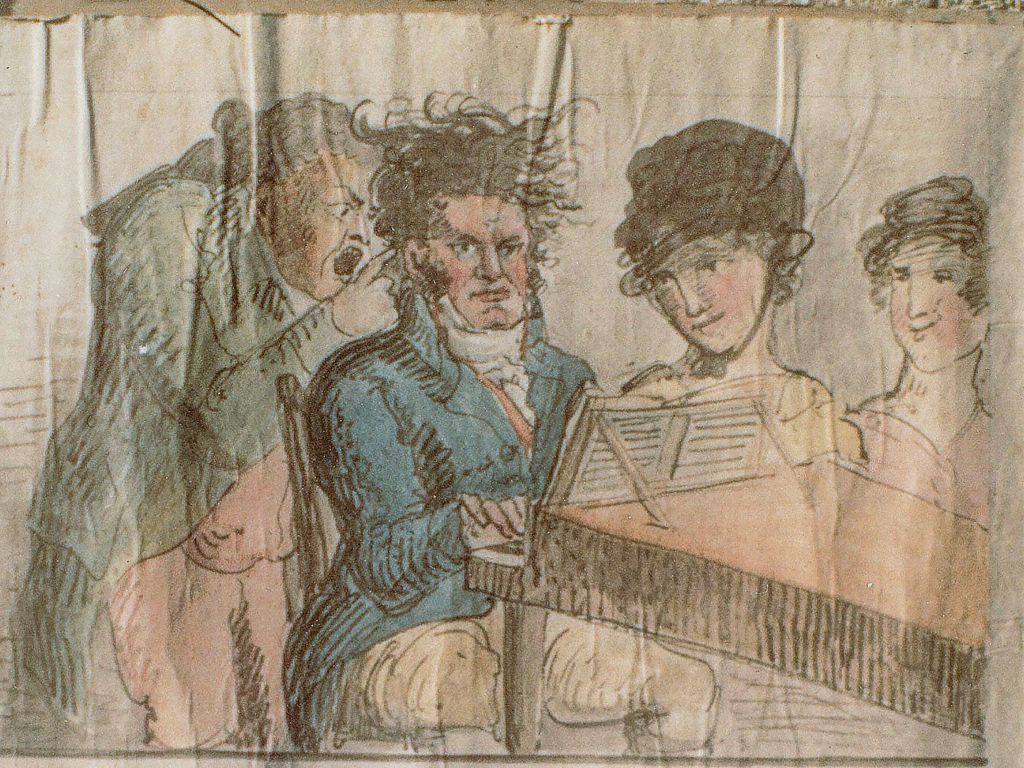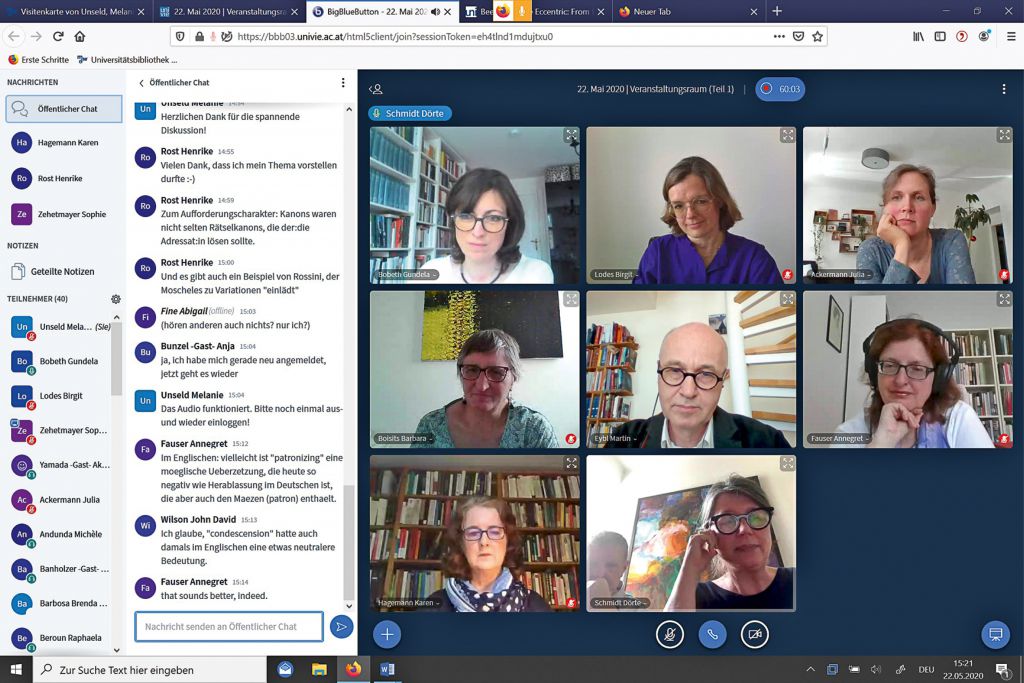2020’s Beethoven Year celebrations were still far off when the initial ideas arose for a symposium that would take this year in the composer’s memory as both an opportunity and a theme. Why and how are we remembering Beethoven during this memorial year? And to what extent does this memorialising actually correspond to the latest research? In bundling the approaches of researchers Birgit Lodes (University of Vienna) and Melanie Unseld (mdw), the intent was to focus on Beethoven as a phenomenon of cultural remembrance: Why is the narrative of the class-critical “revolutionary” Beethoven so powerful even though (particularly newer) research quite clearly shows how Beethoven maintained close ties to the Viennese nobility? When did people start idealising Beethoven in this way? And where, provided one ignores the myth of the lone genius, was Beethoven situated within the entanglements of Viennese musical culture around 1800? It was in this vein that an international, interdisciplinary symposium scheduled to run from 19 to 22 May 2020 had been conceived, planned … and then came the March 2020 lockdown. The organisers quickly realised that their US-, England-, Germany-, and Switzerland-based lecturers would not be coming to Vienna, and that the colourful accompanying program with (lecture-)concerts and museum and archive visits would likewise not be taking place. So what to do? Back in March, simply cancelling the symposium at short notice would’ve met with broad understanding, with many such events being postponed. But the organisers of this one decided to do something different: to transfer it to the digital realm.
It soon became clear that one can’t simply do a 1:1 transfer of a typical symposium to a digital format. And that it was much rather essential to take the digital medium seriously—with its novel possibilities as well as with its hard limits as a two-dimensional, on-screen affair. With all this in mind, new formats were developed: shorter live lectures, live discussions with an additional text-based chat function, uploaded texts that could be commented on for the entire duration of the symposium, and virtual open spaces plus “get together” phases.
This reorientation entailed fundamental changes to the preliminary organisational work. While organisational teams are usually kept busy with arrivals, catering arrangements, publicity material, and the like, the point now was to work at lightning speed to not only find a platform on which the symposium could take place but also prepare and assist all participants in a technical sense so that they’d feel comfortable in the virtual space and be able to concentrate on the content at hand.

The platform chosen for this event was Moodle, an open-source learning management system that was already up and running, could be used at all cooperating institutions, and offered various functions as plug-ins as well as an adaptable layout. The lectures and live discussions took place using the conference tool “BigBlueButton” (BBB). In making participants’ contributed texts available, two concerns were central: they were to be embedded pages of text, and there also needed to be a way to add comments. To this end, text contributions were made available in two formats: as a version for reading and as a version for comment (Wiki). In general, data security—i.e., protecting the presented files from unauthorised access and further use—was an important factor in selecting the conference platform’s tools. And the platform eventually selected also made it possible to provide a group of registered individuals with access to the symposium material in such a way that differing access and use privileges could be granted to authorised participants and the audience. Last but not least, providing low-threshold access and use for all was likewise a central concern.
While several custom-produced explanatory videos provided all participants with technical help, the virtual symposium office itself still represented a little island of “normal” symposium activity: set up separately as its own BBB conference, this virtual space was used both for team meetings and for providing support to participants who had technical questions. Furthermore, a member of the organisational team was constantly present in this BBB space during the entire symposium for technical support purposes.
The great panache with which all participants gave themselves over to the new possibilities (of communication) was on clear display. And the chosen approach—of conceiving lectures differently (shorter and perhaps even more pointed), uploading texts ahead of time, and integrating intense reading and discussion—generated a very positive response, as did the opportunity for the students of the accompanying seminar and others among the ca. 140 registered participants to participate directly (both by speaking and via the chat function) in the live discussions.

Despite all the work that went into this transfer to the digital realm, ample time and mental resources remained for the content itself. The chosen approach, to conceive of Beethoven’s years in Vienna as a socio-political phase of instability and shifting alliances, a period that saw the re-evaluation and reassessment of societal structures and institutions, fell on fruitful ground in the international and interdisciplinary research community. Intense discussion was devoted to matters including that era’s new role for culture as symbolic communication that served representation, the search for national identity, and introspection amidst the old estates’ dissolution and the quest for artistic autonomy. In the process, new spaces (or: spaces of a new nature), such as spa towns and salons as islands of temporary social permeability, came into view. And the role assumed by “the artist” or “the woman of letters” amidst a social web that transcended the estates but was simultaneously so conscious of said estates was also intensely discussed, as was the artist (Beethoven) as a new kind of “hero” in an area that craved new heroes, a role that brings us back to what is by now a 250-year history of memorialisation.
Beethoven-Geflechte. Networks and Cultures of Memory. International and interdisciplinary symposium for Beethoven Year 2020. Idea and conception: Birgit Lodes (University of Vienna) and Melanie Unseld (mdw – University of Music and Performing Arts Vienna) in association with the Austrian Academy of Sciences, 19–22 May 2020.
mdw.ac.at/imi/beethovengeflechte
(Birgit Lodes, Imke Oldewurtel, Melanie Unseld, Sophie Zehetmayer)

